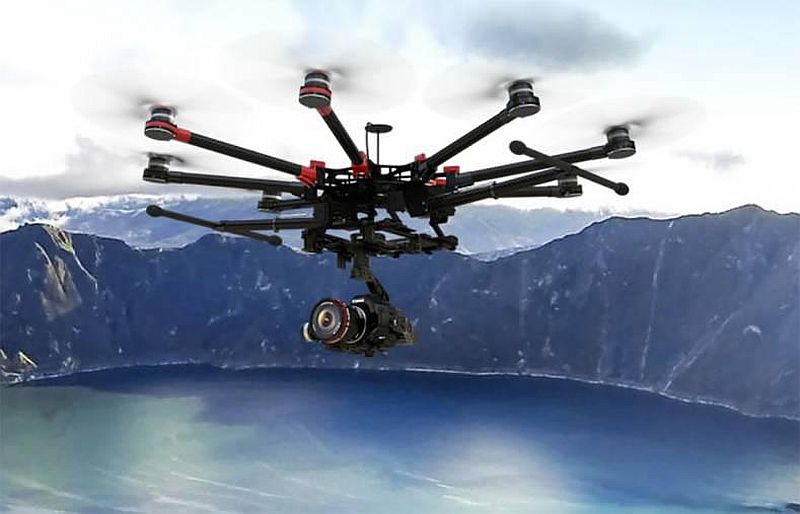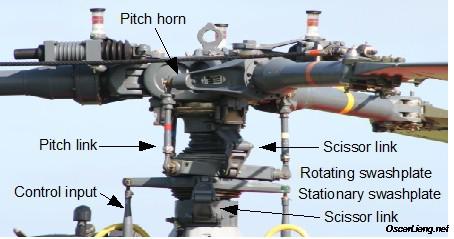Drones: A Bird's Eye View on the Future of Filmmaking

DRONES: A BIRDS EYE VIEW
By Sandip Pratihar Image (above) from “Gorchlach: The Legend of Cordielia”
“I think technologies are growing massively in the world. Drones included. Where humans can’t reach drones can. But there is always the question of privacy. In some countries the use of drones is banned. So I think drone technology is good where it pertains to cinema and other creative applications; but the possibility for missuse is always a consideration.” A drone is a simply an aircraft - relatively small - piloted either autonomously by on-board computers or by a remote control on the ground. Drones have been used for military and special operation applications in recent history, but modern technology has allowed companies to manufacturer commercial versions for consumer use. In this guide, we will discuss how to do aerial photography with drones for consumers.  The origin of the drone occurred towards the end of world war one, The US army were designing aerial torpedo’s, which were small planes that were used like the Kamikaze and slammed into their target. The war ended before they could be used. In 1939, in the very early stage of world war two, The United States produced the first remote controlled aircraft called the Radio plane 00-2.
The origin of the drone occurred towards the end of world war one, The US army were designing aerial torpedo’s, which were small planes that were used like the Kamikaze and slammed into their target. The war ended before they could be used. In 1939, in the very early stage of world war two, The United States produced the first remote controlled aircraft called the Radio plane 00-2.
Norma Jeane, before she became better known as Marilyn Monroe, worked at the California plant, where she worked on the assembly of the Radio plane 00-2 during the war. Unmanned surveillance operations continued to play a more prominent role in the Cold War and global conflict in general. In 1973, Israel developed the AI scout, which were unmanned surveillance machines in the sky. In 1986, the US and Israel came together to produce the RQ2 Pioneer; a medium seize reconnaissance drone. IN 1990, American defense contractor General Atomics, bought an Israel engineer to design and create the Gnat 7050 drone concept, which would later become the Predator Drone we know today. In 2014, Amazon announced proposals to use drones much smaller and simpler than those used in the military to deliver packages to customers. Real estate agencies have begun using drones for promotional videos and taken pictures from the sky of high end properties in their marketing.
Small and medium size companies have started creating their own small-scale machines for recreational purposes, which have proved very popular in sports such as surfing and skiing, where the small device simply follows the subject with the help of a GPS tracker on their wrist. Others uses of drones are for anti-poaching rescue missions in Africa. Medical delivery by drones in remote places temporally cut off from the outside world is still in testing phase at the moment. Technically there is no difference between drones and helicopters. That’s because they are not mutually exclusive things. See, a drone could be made in the form of a helicopter, an airplane, or even a balloon. A drone is just a popular term for any unmanned aerial vehicle. So, by popular terminology, any vehicle that flies and doesn’t have a pilot inside the cockpit manually steering it would be a drone. It could be controlled by a human via a remote or by pre-programmed computer software.

So if we were to just look at the term drone, then that can really be used to mean any unmanned vehicle operated either through software or the use of a remote pilot. A drone can be made in the shape of an airplane, a helicopter, a quadcopter, or even submarine for that matter. So in short, there is no difference between a helicopter and a drone. Drones can be made in any shape or size, it just means that it is a moving vehicle of some kind without a pilot inside the craft, but when most people mention a drone today, they are typically speaking about quadcopter designs. Smaller cameras, drones and technology that smooths out wobbly camerawork are some of the gadgets that are allowing filmmakers to go to places they could not previously reach. In the old days, cameramen used to have the camera on their shoulder and run after someone or something, which looked a bit bumpy, now we can make it look absolutely smooth. The technology's getting smaller and smaller, which allows you to take really good shots but get into more nooks and crannies than you ever could before. That's the real, dramatic change. The small, high quality cameras have been disguised in model animals for series like Dolphins - Spy in the Pod and Penguins - Spy in the Huddle. They can also be fitted as octocopters - eight-bladed drones - and used in conjunction with anti-wobble technology to film smooth, swooping shots. In the old days, we had cameramen hanging out of the side of a helicopter. But now, you can be on a boat in the ocean and you can send a little octocopter up and film dolphins swimming in the ocean. Over time, we've seen many films that are shot with drone cameras, like “Eye In The Sky” and many others.

BANS ON DRONES Drones can be incredibly useful, especially when it comes to obtaining some fantastic aerial photos and video footage. However, if you’re thinking of taking your drone up into the skies, you should be aware that there are bans on flying drones around certain buildings, in particular areas, and even in entire countries! UAE, Japan. The National Park Service (NPS), which manages all 58 National Parks across the USA, has imposed a ban on the use of drones within National Parks, and prior permission has to be granted first in order to do so. The permission can take a few days or weeks depending on the National Park authorities. The ban has been imposed for a number of reasons. Firstly, drones are noisy, causing disruption and, to be frank, annoyance for other visitors looking to enjoy peace and quiet in the impressive surroundings of the National Park. In addition to humans, drones can cause issues for animals within the park – if they come to close to the animals, this can cause distress, especially where young ones are involved. And it’s not only national parks. Many individual state parks such as California’s Monterey Bay National Marine Sanctuary and Colorado’s Garden of the God’s Public Park are following their lead in banning drones.
 Sandip Pratihar is an award-winning filmmaker, and writer. As a screenwriter, film director and independent filmmaker, he is very pro-active and follows his calling to communicate artistically intrinsic social messages. From West Bengal, India, Sandip is currently living in Kolkata. He has directed three films all currently playing the festival circuit. The short film "SITA", is his most recent work, just took top honours at sixteen International film festivals.
Sandip Pratihar is an award-winning filmmaker, and writer. As a screenwriter, film director and independent filmmaker, he is very pro-active and follows his calling to communicate artistically intrinsic social messages. From West Bengal, India, Sandip is currently living in Kolkata. He has directed three films all currently playing the festival circuit. The short film "SITA", is his most recent work, just took top honours at sixteen International film festivals.


